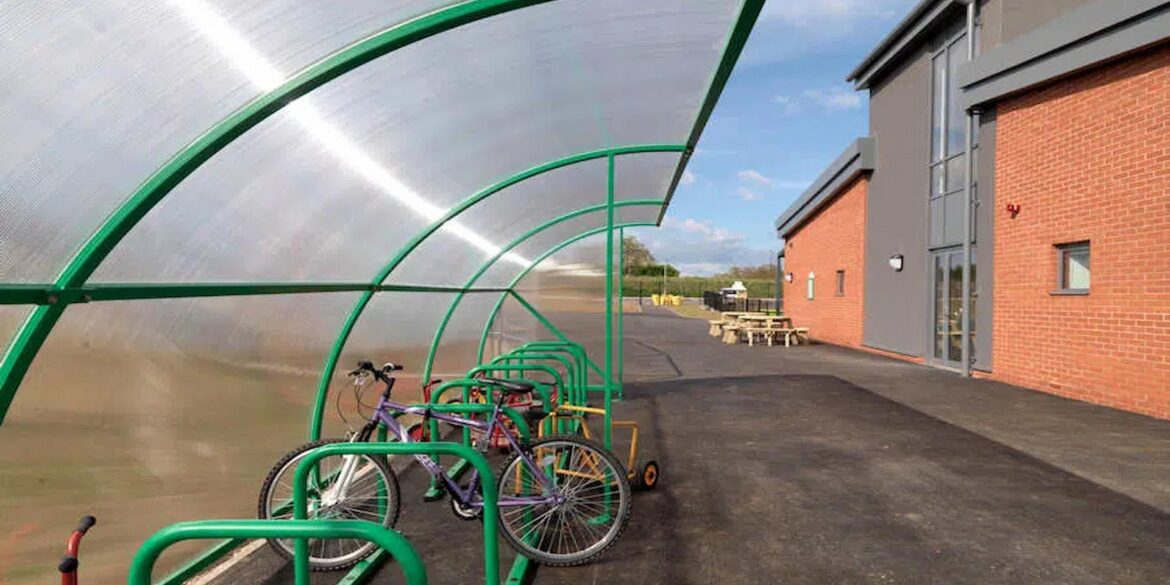Cycling has become ubiquitous in urban landscapes, a testament to the growing preference for sustainable and healthy transportation. However, with the rise in the number of cyclists comes the pressing need for adequate and secure parking facilities. In this context, the significance of bike shelters has taken centre stage, offering a practical solution to the challenges faced by urban cyclists.
The Urban Cycling Boom
As urban areas witness a surge in cycling, it’s crucial to acknowledge the transformative impact on the environment and public health. The shift towards pedal power brings about a reduction in carbon emissions and promotes a healthier lifestyle. However, the success of urban cycling is contingent on the availability of proper infrastructure, particularly regarding parking. Inadequate facilities significantly hinder the seamless integration of cycling into urban lifestyles.
Understanding Bike Shelters
In response to the need for secure and convenient bicycle storage, bike shelters have emerged as a vital component of urban infrastructure. Unlike traditional bike racks, these shelters go beyond mere functionality, providing a holistic solution that addresses security, weather protection, and urban aesthetics. They come in various forms, from basic covered spaces to high-tech smart storage solutions catering to the diverse needs of urban cyclists.
Importance of Bike Shelters
Bolstering Security
One of the bike shelter’s primary advantages is its enhanced security. Traditional bike racks may leave bicycles vulnerable to theft or damage. In contrast, shelters provide a more robust protective environment, deterring potential thieves and ensuring the safety of valuable bicycles.
Weather Protection
Weather elements can wreak havoc on bicycles, leading to rust, corrosion, and other forms of damage. Covered bike shelter shields bicycles from rain, snow, and harsh sunlight, preserving their condition and extending their lifespan. This protection not only benefits individual bike owners but also contributes to the sustainability of urban cycling as a whole.
Urban Aesthetics
Beyond their practical function, bike shelters play a role in enhancing the visual appeal of urban spaces. Thoughtfully designed shelters can integrate seamlessly into the urban landscape, creating a more aesthetically pleasing environment. This, in turn, fosters a positive perception of cycling as a viable and attractive mode of transportation.
Encouraging Cycling
By providing secure and weather-resistant storage, bike shelters actively encourage more individuals to take up cycling. The assurance of a reliable parking space addresses a common concern among potential cyclists, making them more inclined to adopt this eco-friendly mode of transportation.
Factors to Consider When Choosing a Bike Shelter
Durability and Materials
When selecting a bike shelter, durability is paramount. Materials such as galvanised steel or aluminium offer robustness and resistance to weather-induced wear and tear, ensuring a long lifespan for the shelter.
Capacity and Scalability
The chosen shelter should align with the demand for bicycle parking in a given area. Scalability is crucial to accommodate the potential growth in the number of cyclists, preventing congestion and ensuring accessibility.
Security Features
A comprehensive bike shelter should incorporate security features, such as locking mechanisms or surveillance systems, to further safeguard bicycles from theft and vandalism.
Integration with Urban Design
To enhance the overall urban experience, bike shelters should complement their surroundings’ existing architectural and design elements, creating a harmonious blend within the urban fabric.
Environmental Sustainability
Opting for eco-friendly materials and sustainable construction practices contributes to the overarching goal of creating environmentally conscious urban spaces. Bike shelter can be part of a broader initiative to promote sustainable living.
In the ever-evolving urban landscape, the symbiotic relationship between cyclists and their environment hinges on innovative solutions. The burgeoning significance of bike shelter cannot be overstated, transcending mere storage to become a pivotal element in the urban cycling narrative. As cities embrace sustainable transportation, these shelters stand as guardians, shielding bicycles from theft, weather, and neglect. The narrative is clear: These shelters are not just protective havens but catalysts for a cycling renaissance, fostering a harmonious coexistence between urban spaces and the two-wheeled companions that navigate them. In the journey towards a greener and more cyclist-friendly urban future, these shelters emerge as indispensable sentinels.

